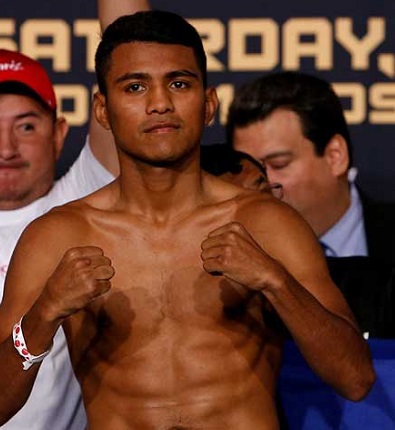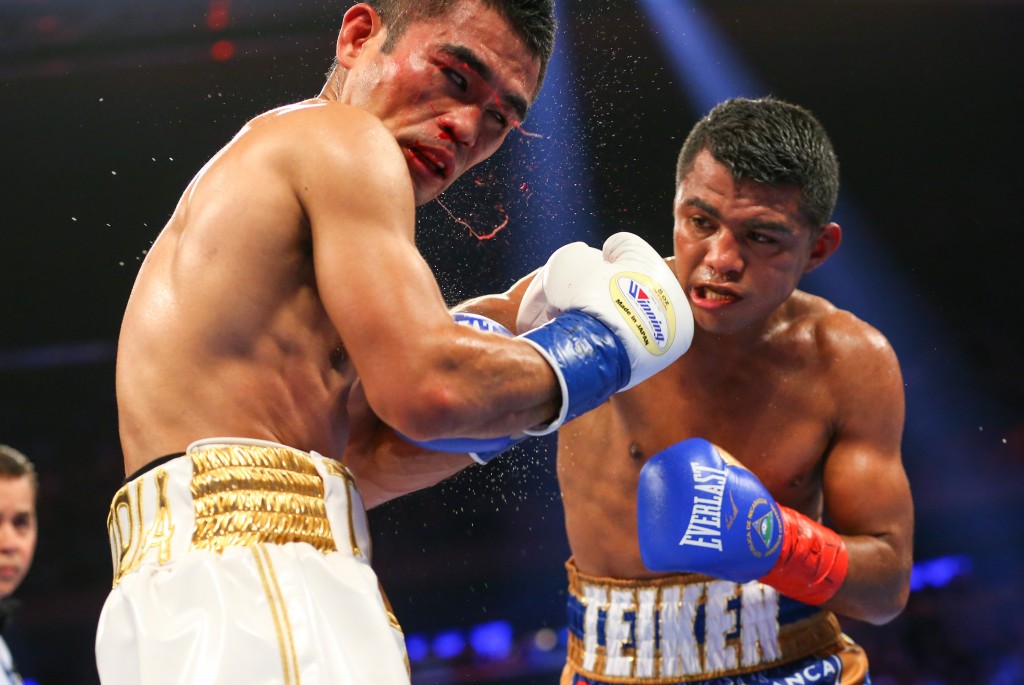Question And Answer With Lee Wylie (No. 4)
Suffering from uncertainty about your lead shoulder feint? Having trouble with your distance management or footwork? Are tactical concerns regarding your favorite fighter keeping you up at night? Well, fear not: Lee Wylie is here to help. Just send in your questions to thefightcity@gmail.com and Lee will respond as quickly as possible.

Dear Lee Wylie,
I want you to know I appreciate all the masterful work you’ve done for The Fight City. It’s always refreshing to see your perspective of the fight game. Firstly, what are your thoughts on Chocolatito’s defensive covering tactics? He always seems to never take any real damage and maintains staying in range after absorbing or dodging combinations. When I see other boxers try to do this (including Naoya Inoue when he fought Ryoichi Taguchi) they get knocked off balance and have to reset. Also, what do you think will happen when Gonzalez and Inoue eventually meet?
Thanks!
Sincerely,
Joshua Massey
Thanks for your kind words, Johsua.
For my money, no task in boxing requires as much craft and guile as that of staying in range, making the opponent miss, and then making him pay. So it is with zero hyperbole that I say Roman Gonzalez, who does this masterfully, is one of the most skilled and nuanced pressure fighters I’ve ever seen.

Pressure fighters aren’t typically elusive as most will gladly take one to land one. But “Chocolatito” is not your typical pressure fighter. Rather, he is the epitome of what heavyweight legend Jack Dempsey termed “aggressive defense.” In the eyes of Dempsey, defense without offense is an exercise in futility; defense must always act as a precursor to offense. And so it is with Gonzalez. Instead of looking to absorb unnecessary punishment in the hope of outlasting his opponents in a war of attrition—as has so often been the modus operandi for many a pressure fighter throughout history—Gonzalez relies on his underrated defensive skills, not just to avoid eating punches on the way in, but to create opportunities for offense.
Just how exactly does Roman Gonzalez do this, you ask?
Well, for starters Gonzalez will often slip inside his opponent’s jab and counter with either a right hand over the top, or a left hook to the body. He connects as he slips the jab if he’s countering with the right, or immediately after if he throws the left hook. But it’s worth noting that Gonzalez does not always wait to react to a punch. More often than not, Gonzalez keeps his upper-body in motion—and his head subsequently off-center—by proactively slipping and ducking before, during and after punching. In other words, his movement is designed to simultaneously avoid punches and put himself in position to counter.

We all know Gonzalez is an exceptional combination puncher. Governed by range and targets, the selection, fluidity and placement of his blows is truly a sight to behold. Gonzalez will also cleverly double up on punches to both throw off his opponent’s defensive timing and create further openings. He loves throwing the left hook to the body to bring down his opponent’s right arm, which in turn opens up a target for a left hook upstairs, for example.
What sometimes goes unnoticed though, is the way “Chocolatito” seamlessly incorporates upper-body movement into his combinations. A basic jab-cross-hook combination by Gonzalez, for instance, may include a slip to the right immediately following the jab to safeguard against a right hand counter. Likewise, the same combination may incorporate a shallow duck after the cross in anticipation of the opponent’s probable left hook counter. Put simply, Gonzalez knows where he will be open depending on which punch he throws. Clearly, Roman has been drilled so that his punches and upper-body movement work in concert, serving to both minimize openings and exploit those of his opponent.

Gonzalez is also brilliant at blocking and countering on the inside, using his forearms and gloves to catch punches before returning fire instantaneously. Generally, Gonzalez likes to counter from the same side which he has just defended, thereby taking advantage of where the opponent is open. For instance, he will catch a wide right hand on the outside of his left glove and reply with a left hook. Alternatively, after using his right elbow or forearm to catch a left hook aimed at his body, he will counter with a right uppercut.
Despite employing a more conventional guard from a wider stance, much of Gonzalez’s work at close range is not too dissimilar to that of a slick, Philly or Michigan shell fighter. But where they will predominantly use their lead shoulder to block and deflect right hands, as well as to get a “feel” for what the opponent is doing, Gonzalez uses his gloves and forearms. By twisting his torso and subtly riding punches, allowing the force to dissipate, Gonzalez rarely bears the brunt of his opponent’s blows, meaning he hardly ever gets knocked off-balance.
Similarly to how he rides punches on the inside, “Chocolatito” will perform a technique called a “layback” or “snapback”, which causes his opponent to fall short with a jab or cross, but allows Gonzalez to remain in punching range. The mechanics involve shifting the weight to the rear and over a firm but flexible back leg. This enables Gonzalez to move his upper-body in the same direction as the blow, spring back, and then follow-up with his own attack before the opponent can recover. In keeping with what we touched on earlier, Gonzalez will preemptively insert laybacks into his combinations to stay elusive and reduce the chances of being nailed with a counter.
From a technical perspective, I’ve long said that Gonzalez has the best footwork in boxing. Stable, seldom off-balance, and always in position to lead, defend or counter, Gonzalez is a walking textbook on efficient, correct movement inside a boxing ring. But footwork in boxing isn’t just about getting from A to B. Power punching, slipping, laybacks, riding punches—each of these techniques are dependent on footwork. It is no exaggeration to say that nearly every technique in boxing starts from the ground up. Footwork, both figuratively and literally, plays a pivotal role in just about everything Gonzalez does inside the ring. When standing shoulder-to-shoulder with an opponent, for example, Gonzalez will suddenly take a step back with his rear foot to create space and set up a right uppercut, which in turn lifts the opponent’s head and paves the way for a left hook or jab-cross combination.
In addition, one of Gonzalez’s favorite techniques at short range is an inside pivot followed by a left hook to the body. Many fighters tend to push and lean on the inside. To take advantage of this, Gonzalez will fire off a short right hand and then pivot away in the opposite direction to the line of force. By withdrawing his lead foot and then sliding his rear foot out 90 degrees, Gonzalez changes the angle and uses his opponent’s momentum to maneuver him into a left hook to the body, which then sets up a right hand upstairs thrown from the opponent’s blindside. It’s a clever little trick which allows Gonzalez to avoid the opponent’s right hand while also giving him easy pickings on the left flank, or, if the opponent turns to face him, a chance to get off punches unimpeded while his adversary realigns himself.
Maintaining order amidst the chaos of combat is no easy task. But by astutely manipulating angles and distance, and intertwining offense and defense as if they are one and the same, Gonzalez, aided by his uncanny perceptual speed and drill-conditioned muscle memory, does so with great aplomb.

Now, as far as a hypothetical match-up between Gonzalez and Naoya Inoue is concerned, I have absolutely no idea how things would pan out. For starters, I’m not convinced the fight will even take place, as Inoue, just 22 years-old and still growing, might already be too big for Gonzalez. But if the fight can be made sooner rather than later, here are some brief observations:
Both fighters use the jab primarily to get into range and as an initiator for combinations. The power of Inoue’s jab varies depending on whether he is looking to break up an opponent’s attack or set up one of his own. “The Monster” also uses his jab (along with his left hook) to get his opponent circling left, and into the path of his rear straight. If the opponent starts slipping inside or ducking underneath the jab, he will begin throwing his right uppercut. Much like “Chocolatito,” Inoue modifies his offense in accordance with his opponent’s tendencies.
Gonzalez is clearly the more accomplished aggressor, but both men are proficient at cutting off the ring and are lightning quick at shortening distance. Using small steps to shuffle forward, Gonzalez keeps his lead foot aligned with his opponents’ center and often catches them between steps on the back foot, while they are off-balance. Gonzalez’s footwork is highly economical and deceptively fast. Inoue, on the other hand, will often freeze his opponent with a feint, and then raid from a distance and at a speed which belies belief. In terms of closing the gap, both are exceptional.
Inoue is, in my opinion, the physically superior fighter. His speed, of both hand and foot, is blistering. And judging by the way opponents react, I believe Inoue might be the more powerful puncher. His physical attributes seem to hand him the initiative early in fights. In some respects, Inoue is similar to the super-featherweight version of Manny Pacquiao, particularly from the waist down. But the Japanese fighter is more technically sound than the 130 pound Filipino was from the waist up. And by that I mean Inoue has more polish and variety to his work, and throws punches more conventionally. Inoue’s staccato rhythm and explosiveness, also similar to that of a younger Manny Pacquiao, creates havoc with the opposition’s timing and balance.

Inoue often leads with long left hooks which he uses to close distance and engage his opponent’s guard, setting up his right hand to both head and body. But because Inoue sometimes jumps in without setting up the hook, the more experienced “Chocolatito,” who rarely finds himself off-balance and is always in position to counter, could take advantage.
Both Gonzalez and Inoue are outstanding combination punchers. Inoue works the jab, cross and hook off one another extremely well. He’ll use a jab-cross to narrow the guard for a sequence ending hook. Alternatively, he will use the jab-hook or a simple, yet highly effective slapping hook to widen the guard for a final rear straight. Inoue also uses light, throwaway punches to set up and subtly gain leverage for more powerful ones. For instance, he will flick out two jabs, and then use a blinding right hand to simultaneously obscure the opponent’s vision and load his left side for a left hook to the body.
Inoue tends to vary his contact levels more, and is perhaps a little shrewder than “Chocolatito” when it comes to disguising that final, more telling blow. But Gonzalez, through an array of straights, hooks and uppercuts, has more punch variety, which enables him to find and exploit gaps in his opponent’s defense from every conceivable angle. As a result, the opponent is kept guessing and unsure of where to position his gloves.
Gonzalez is very good body-puncher, but Inoue appears to be a devastating one.
Like Gonzalez, Inoue is an excellent counter-puncher. But where Gonzalez likes to slip/catch and counter on the front foot, often flowing into a combination thereafter, Inoue likes to draw the opponent forward, make him fall short, and then counter off the back foot.
Inoue isn’t as refined as Gonzalez when it comes to in-fighting, but defensively, he is comfortable getting behind his lead shoulder, closing off his main targets, and rolling with right hands.
All told, my gut feeling is that Inoue’s superior physicality might be too much for Gonzalez to deal with, and may trump the Nicaraguan’s superior craft. On the other hand, experience counts for a lot in boxing, and “Chocolatito” is clearly the more seasoned of the two combatants. But for now, let’s just keep our fingers crossed and hope the fight can be made, because in terms of the level of skill it will be contested at, the bout should live up to the hype and produce a physical, high-speed chess match of the highest order.
Regards,
https://youtu.be/3rq8iKZnRyc






Great article Lee Wylie!
Loved the videos, explained perfectly. An admirer of both Gonzalez and Inoue’s craft. Would love that fight to happen in 2017….but would prefer Gonzalez to become undisputed at 112 (including a Estrada rematch!).